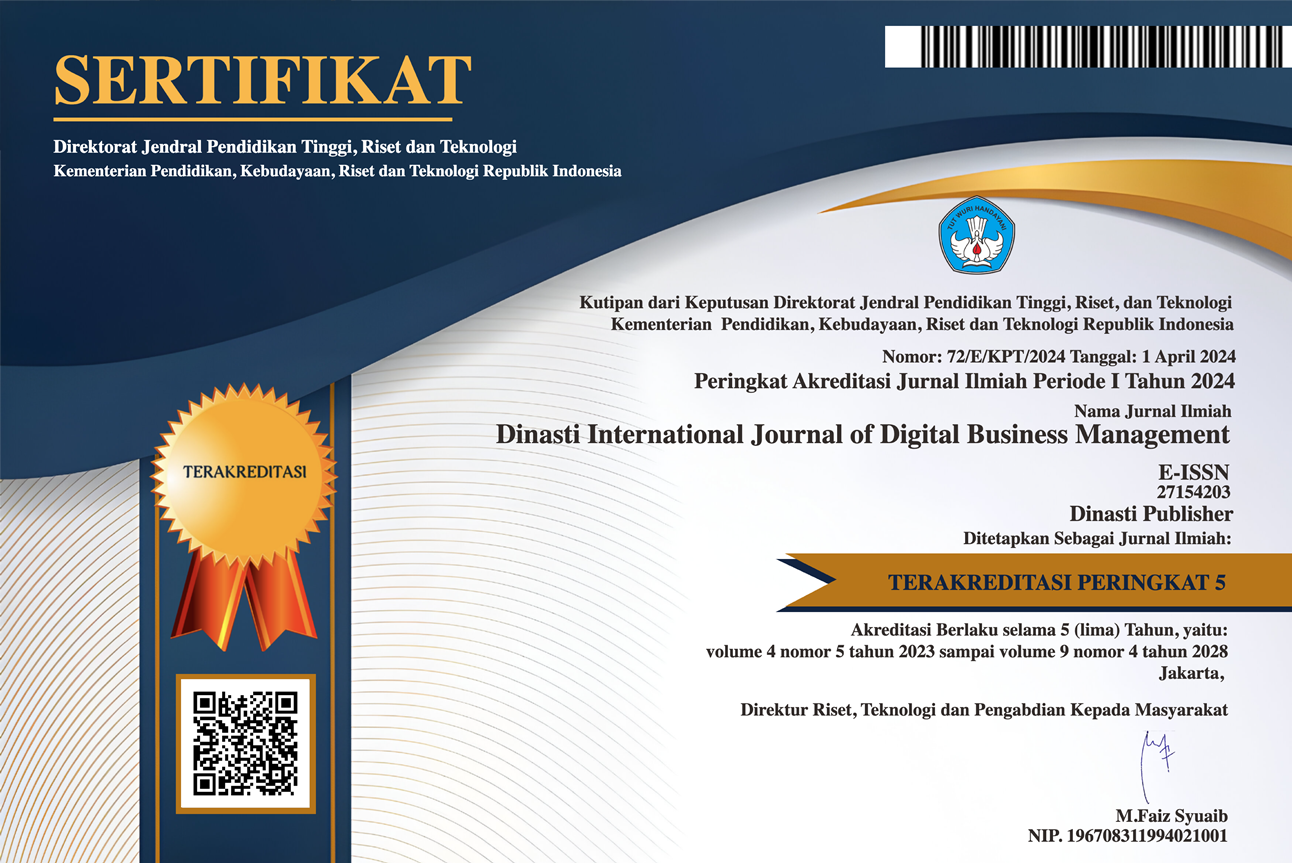Building a Winning Team: PT XYZ’s Approach to Optimizing Performance through Discipline and Culture
DOI:
https://doi.org/10.38035/dijdbm.v5i2.4136Keywords:
work discipline, organizational culture, team performance, multiple linear regression, PT XYZAbstract
This study aims to analyze the influence of work discipline and organizational culture on team performance at PT XYZ. Work discipline is considered a major factor in creating high productivity through compliance with company rules, punctuality, and individual responsibility in completing tasks. Meanwhile, organizational culture plays a role in forming a positive work environment, increasing employee engagement, and strengthening loyalty to the company. This study uses a quantitative method with a descriptive correlational approach. The research sample consisted of 150 respondents selected from a population of 300 employees using a proportional random sampling technique. Data collection was carried out through a questionnaire that had been tested for validity and reliability, and analyzed using multiple linear regression. The results showed that work discipline had a positive and significant influence on team performance with a value of t = 6.78 and p = 0.000. Organizational culture was also proven to have a significant influence on team performance with a value of t = 5.92 and p = 0.001. Simultaneously, work discipline and organizational culture had a significant influence on team performance with a value of F = 24.67 and p = 0.000. These findings indicate that the combination of high work discipline and strong organizational culture is an effective strategy in building a superior team at PT XYZ. The implications of this study indicate that companies need to strengthen clear and consistent work discipline policies, as well as create an organizational culture that supports innovation, open communication, and team collaboration in order to improve overall performance. Thus, a human resource management strategy that focuses on the balance between work discipline and organizational culture can be a solution to improve the company's competitiveness in the long term.
References
Cameron, K.S., & Quinn, R.E. (2011). Diagnosing and changing organizational culture: Based on the competing values framework (3rd ed.). John Wiley & Sons.
Creswell, J. W. (2018). Research design: Qualitative, quantitative, and mixed methods approaches (5th ed.). Sage publications.
Ghozali, I. (2018). Multivariate analysis application with IBM SPSS 25 program (9th ed.). Diponegoro University.
Gujarati, D. N., & Porter, D. C. (2019). Basic econometrics (6th ed.). McGraw-Hill.
Hasibuan, MSP (2016). Human resource management (Revised ed.). Bumi Aksara.
Kotter, J. P., & Heskett, J. L. (1992). Corporate culture and performance. The Free Press.
Nawawi, H. (2020). Social research methods. Gadjah Mada University Press.
Robbins, S.P., & Judge, T.A. (2021). Organizational behavior (18th ed.). Pearson.
Schein, E. H. (2017). Organizational culture and leadership (5th ed.). John Wiley & Sons.
Sekaran, U., & Bougie, R. (2019). Research methods for business: A skill-building approach (8th ed.). Wiley.
Sugiyono. (2020). Quantitative, qualitative, and R&D research methods. Alfabeta.
Sunarto. (2021). The influence of work discipline and organizational culture on employee performance in the industrial sector. Journal of Management and Business, 15(2), 112–125.
Downloads
Published
Issue
Section
License
Copyright (c) 2025 Mutmainah Mutmainah

This work is licensed under a Creative Commons Attribution 4.0 International License.
Authors who publish their manuscripts in this journal agree to the following conditions:
- The copyright on each article belongs to the author(s).
- The author acknowledges that the Dinasti International Journal of Digital Business Management (DIJDBM) has the right to be the first to publish with a Creative Commons Attribution 4.0 International license (Attribution 4.0 International (CC BY 4.0).
- Authors can submit articles separately, arrange for the non-exclusive distribution of manuscripts that have been published in this journal into other versions (e.g., sent to the author's institutional repository, publication into books, etc.), by acknowledging that the manuscript has been published for the first time in the Dinasti International Journal of Digital Business Management (DIJDBM).















































